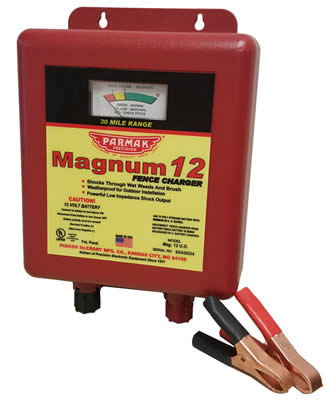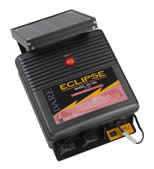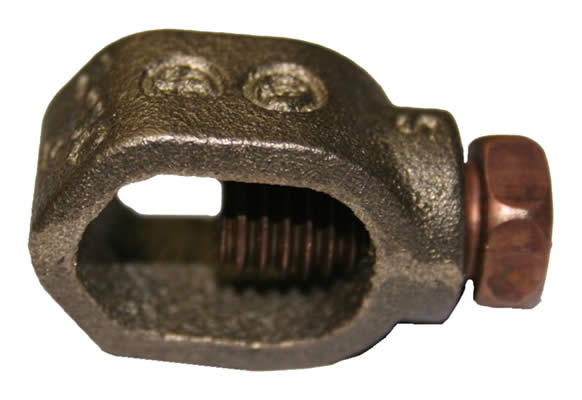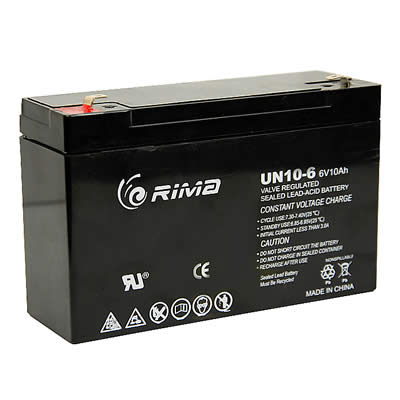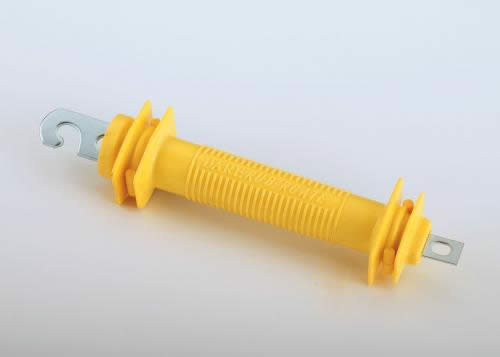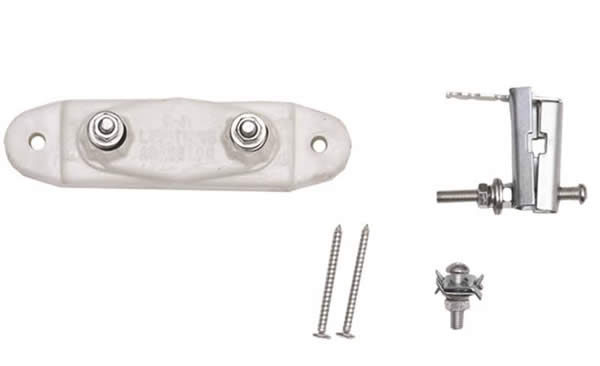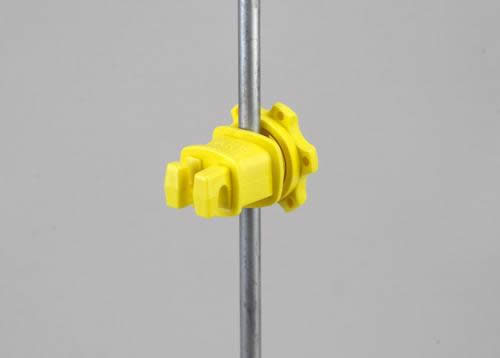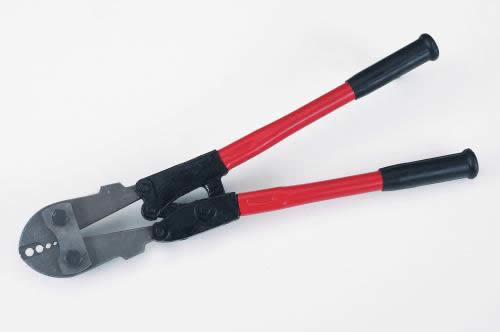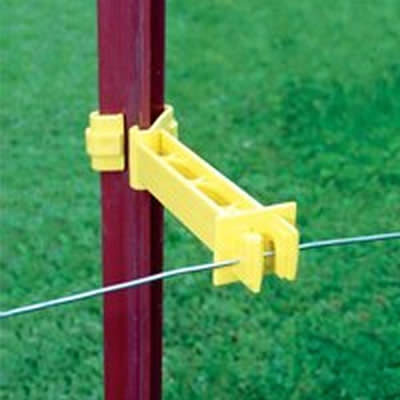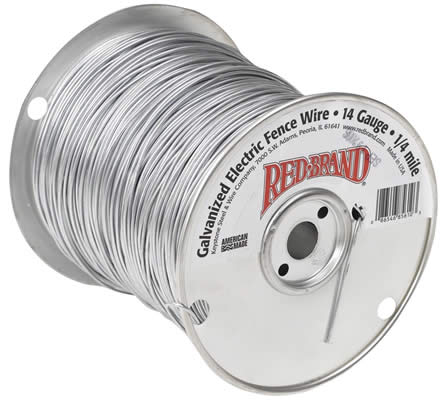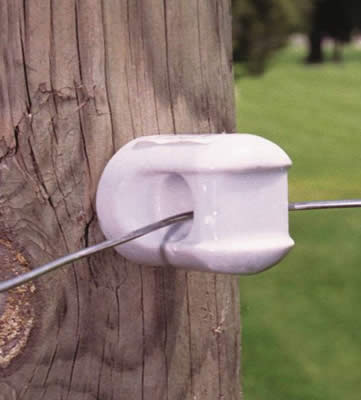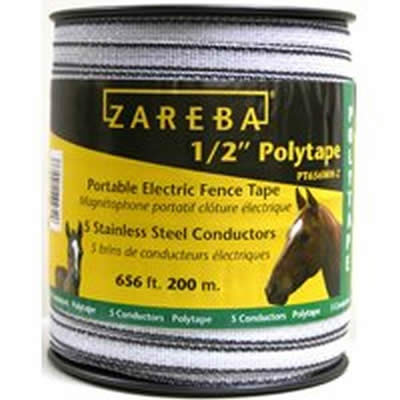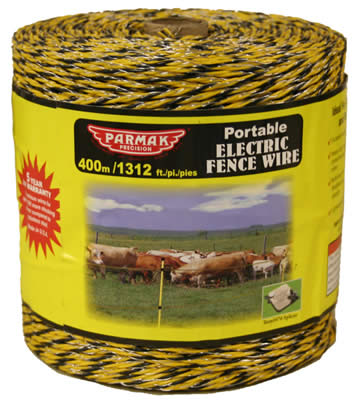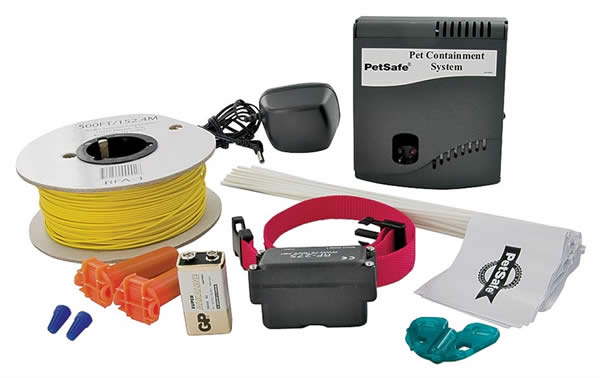Electric Fence
Electric fences are a safe and economical alternative to traditional fences. Choosing the right materials to construct an electric fence is important to prevent problems from arising and also to insure that whatever type(s) of animals you are trying to contain or keep out will stay within or outside of the boundaries of the electric fence.
To build an electric fence you will need a charger along with posts, insulators, fence wire or poly fencing and a grounding system. For basic information on electric fences see our Electric Fence Knowledge Base. You may also want to include a gate handle, lightning protection and a cutout switch. We carry all these items except posts, see our Electric Fence Supplies pages for our current product line.
Electric Fence Knowledge Base
Why Use an Electric Fence Instead of Traditional Fence
Traditional Fence is expensive, difficult to maintain, requires multiple tools to build and the work can be back breaking. While traditional fencing has it's place an electric fence can be a better option. Let us look at the benefits of electric fencing versus traditional fencing.
- Safety - Electric Fence if properly installed and marked, is a safe alternative for both humans and animals. It will prevent cuts, scrapes and vet bills from animals brushing up against barb wire and woven wire. Barb wire while quite effective can be difficult to work with and presents hazards to both humans and animals
- Flexible - If you need a temporary or moveable fence then go with an electric fence. You can easily add to or remove sections, install in areas where traditional fence simply won't work and the design possibilities are almost endless
- Easy Installation - Most electric fences can be installed by one person with a minimal number of tools. This will save on expensive labor costs and the need for expensive tools used in traditional fencing
- Affordable - The cost savings can be significant when compared to the expense of wood, woven wire or barbed wire fences
- Effective - Animals will learn very quickly to not approach an electric fence. Generally speaking, one shock will deter the animal from touching an electric fence
How an Electric Fence Works
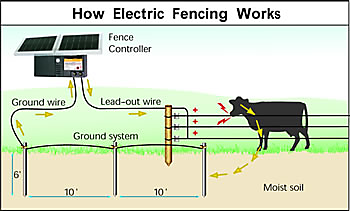
Copyright Woodstream Corporation
An electric fence can be used to control a wide variety of animals in varied conditions over long distances. Obviously, an electric fence is not strong enough to physically contain a large animal such as a horse or cow, so the fence's effectiveness is dependent on a psychological barrier being created in the animal's mind. "Don't touch the fence or I will get hurt" is the idea used to make an electric fence effective.
In its most basic form an electric fence consists of a charger, posts, insulators, wire or tape and a grounding system. When working correctly electricity passes from the charger through the wire or tape then through the animal to the grounding system. The animal feels the shock and is "trained" to not touch the fence again.
Choosing the Right Electric Fence Charger for your Electric Fence
The Charger is the heart and soul of an Electric Fence. Choosing the correct one is important to the success of your fence. Electric Fence Chargers are available in AC, DC, and Solar models. Which type you need depends on several factors such as availability of household electricity, type of animal to contain or deter, weeds and vegetation level, length of fence and amount of average sunshine.
- AC Electric Fence Chargers - These chargers operate on standard household electricity, plug into any 110-volt AC outlet and are available for distances up to 200 miles. They provide the best output, allow for flexibility and expansion and are the best choice for a permanent installation.
- DC Electric Fence Chargers - Operates on a 6- or 12-volt battery, allows for placement in a remote area. Some chargers use a rechargeable battery and others require battery replacement. Best used in light weed and vegetation areas and to control or deter small animals, pets, and shorthaired livestock.
- Solar Electric Fence Chargers - Ideal for remote locations where a continuous output is needed. Generally, they are much lighter than AC or DC models and contain a battery which stores energy from the solar panels. The battery will need to be replaced every few years. They do well with low to mid vegetation and weed levels.
- Low Impedance Chargers - Low impedance electric fence chargers can contact vegetation and still maintaining the capability of delivering a repelling shock to livestock and are better suited to high vegetation areas, & long distance or complex fences. They work well with wire, tape, and rope fencing.
- Solid State Chargers - Delivers a medium amperage shock in pulses of medium duration. They are best used to control shorthaired livestock, small animals, and pets where light weed conditions exist.
- Continuous Output Chargers - These chargers are always "hot". Instead of pulses delivered to the fence line these chargers deliver a constant electric voltage. Best used in small areas for constant animal containment or as a deterrent.
Another consideration in the purchase process is to determine if a low impedance, solid state, or continuous output charger is the correct choice.
Electric Fence Installation
Installing an electric fence requires planning, supplies, basic tools, proper construction techniques and time. There are many valuable resources on the internet and from your local extension agent that will cover all of this in detail.
For your convenience here is a link to building an electric fence written by Dare that may prove helpful. This manual is downloadable in pdf format by clicking Electric Fencing Made Easy
We will briefly touch on these subjects.- Planning - Common sense in planning an electric fence is a must. Electric fences can be a nuisance to adjoining property owners and a danger to small children. Always check local laws and regulations regarding fencing. Next consider talking with neighboring property owners if the fence will abut their property. Take the time to sketch out your fence taking into consideration any uneven ground, nearby water, or any other obstacles. Also consider termination points, gates, source of power for the charger, warning sign placement or other non-electric fences. A well thought out and planned electric fence will provide many years of service, a poorly thought out or ill planned one will be a constant source of trouble.
- Supplies - As we have touched on before certain items are essential to the construction and operation of an electric fence. Make sure to have sufficient supplies on hand before construction begins to avoid needless delays and lost time. Make a supply list during the planning stage.
- Basic Tools - You will need at the minimum a Fencing Tool, Post Driver, Electrician Pliers, Electric Fence Tester, Gloves, and a Measuring Tape. Each installation will vary and may require additional tools.
- Proper Construction Techniques - Use common sense, read the manual for your charger, refer to the many good sources available on the internet or through local sources. Do not ask the fence or charger to do more than they were designed to do. Be certain you install a good grounding system since it makes up half the electric circuit. Strongly consider lightning protection to help protect your investment.
- Time - Installing any type of fence takes time. Plan your work and schedule accordingly. The job will go much faster if you have a helper or two. Rushing through the job may result in a non-working fence or one that gives nothing but trouble.
Electric Fence Troubleshooting
Electric fences are reasonably easy to troubleshoot. Often the problem lies with a bad ground, weeds grown into the line and "shorting the fence out", a loose connection or a bad power source.
It is beyond the scope of this knowledge base to cover the subject in detail. For your convenience here is a link to a troubleshooting manual written by Zareba that covers troubleshooting all types of electric fences. This manual is downloadable in pdf format by clicking Electric Fence Troubleshooting Manual.
Why we Don't Sell Electric Fence Posts on Our Website
Electric fence posts vary in length from 3 feet to 7 feet, they are also sold mainly in bundles. As such their length and shipping weight will cause them to ship UPS Oversize. The shipping costs would match or exceed the cost of the product and make the item cost prohibitive. However, we can offer a large variety of electric fence posts through our retail store in Hillsville, Va. Any orders would need to be picked up at our store during regular business hours. If you are interested in this service, we ask that you call us to discuss your needs and place your order.



